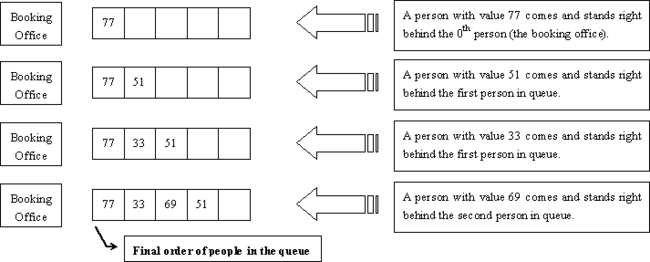【题目】【分析】本题较为简单,设置一个计数器,当接收的字符为"("时候自增,为")"时自减,为B时候退出循环。AC的C++代码如下:#include#includeusingnamespacestd;intmain(){strings;intcount;while(getline(cin,s)){count=0;intlen=s.length();for(inti=0;i
【算法随笔:HDU 3333 Turing tree】(线段树 | 离线 | 离散化 | 贪心)
XNB's Not a Beginner
算法算法哈希算法leetcodec++排序算法
https://acm.hdu.edu.cn/showproblem.php?pid=3333https://acm.hdu.edu.cn/showproblem.php?pid=3333https://vjudge.net.cn/problem/HDU-3333https://vjudge.net.cn/problem/HDU-3333题目很简单,给出长度为N的数组,Q次询问,每次给出区间[x,
test_Time_2h
爱思考的小伙
#基础数据结构与算法图论算法c++
文章目录RelicDiscoveryHDU-5982TextReverseHDU-1062DownloadManagerHDU-3233看病要排队HDU-1873RedandBlackHDU-1312最短路HDU-2544https://vjudge.csgrandeur.cn/contest/499778RelicDiscoveryHDU-5982#include#includeusingnam
hdu 4408 Minimum Spanning Tree
luckycoding
hdu
题目连接:点击打开链接解法:利用kruskal算法把图划分成森林,同一点有相同最小的权值到别的点,通过determinant计算树的课数。总结:模板+自己不太懂=记录+重新学代码君:#include#include#include#defineLLlonglongusingnamespacestd;constintMAX=105;constintMAXE=1005;structnode{intse
2024/2/17 图论 最短路入门 dijkstra 1
极度的坦诚就是无坚不摧
寒假集训寒假算法图论算法c++c语言dijkstra
目录算法思路Dijkstra求最短路AcWing849.Dijkstra求最短路I-AcWing850.Dijkstra求最短路II-AcWing题库最短路最短路-HDU2544-VirtualJudge(vjudge.net)【模板】单源最短路径(弱化版)P3371【模板】单源最短路径(弱化版)-洛谷|计算机科学教育新生态(luogu.com.cn)【模板】单源最短路径(标准版)P4779【模板
2048
不绝_7647
题目链接:http://acm.hdu.edu.cn/showproblem.php?pid=2048思路:该题运用了错排公式,即D(n)=(n-1)*(D(n-1)+D(n-2))。计算出n张字条错排给n个人的可能性(每个人得到的都非自己的字条),再除以n张字条给n个人的所有可能性,就能得出结果。做法:建立数组a,并给a[0],a[1].a[2],a[3]分别赋值0,0,1,2.(其中1和2对应
杭电Oj第二周
J_4d20
做题有个习惯,就是没通过一道题之后都会找下答案,对比一下我的代码还有没有可以在优化的地方,使他更简便链接:http://acm.hdu.edu.cn/showproblem.php?pid=2016我的代码是:#includeintmain(){intn,a[100],t,i,b;while(scanf("%d",&n)!=EOF){if(na[j]){t=a[j];min=j;}for(i=1;
Smiles to the death(3)
KevinZucker
Oneday,a60-year-oldmanexperiencedchestpainandshortnessofbreathduetoexcessiveactivity.Hiswife,whoismorethan10yearshisjunior,wasalarmedatthesightofherhusbandandrushedtomassagehiminanattempttoincreasehis
任意IOS16系统iPad/Iphone开启台前调度
zxfBdd
工作效率ipadiphoneios
方法来自GitHub:GitHub-khanhduytran0/TrollPad:TrollSpringBoardintothinkingit'srunningoniPadOS注意操作前iPad/iPhone上需要安装巨魔手机助手和Filza,关于这两个软件的安装自行百度方法。备注一个巨魔手机助手的下载地址ReleaseTrollStar1.2·34306/TrollStar·GitHub原文内容
K8S之运用节点选择器指定Pod运行的节点
sissie喵~
kuberneteskubernetes容器云原生
node节点选择器的使用使用场景实践使用nodeName使用nodeSelectornodeName和nodeSelector混合使用1、设置了nodeName和设置Node上都不存在的标签。看调度情况2、设置nodeName为node1和设置node2上才有的标签。看调度情况实践总结使用场景默认情况,在创建Pod资源的时候,会根据schduler进行节点调度,默认会随机调度一个工作节点。如果想要
HDU 5159 Card 一次中出现两个也叫一次
DBWG
HDU算法
Problem-5159set暴力超时:intans=0,si=0;intx,b;voiddfs(setcur,intt){if(t==0){for(autox:cur)ans+=x;si++;return;}for(inti=1;i>x>>b;for(inti=1;is;s.insert(i);dfs(s,b-1);}cout>t;for(inti=1;i总次数减去未出现的次数就是出现次数//(
iOS逆向之腾讯视频广告篇
暴躁键盘侠
本文章主要是实现在非越狱机上去掉腾讯视频广告的一个功能,仅供学习交流!!!一、获取褪壳app首先我们需要一个去壳的ipa文件,以前在PP助手可以下载。但是后来PP助手不能用了,也没找到其他地方下载,只能自己动手了。下面推荐三种去壳的方式:Clutchdumpdecryptedfrida-ios-dump。过程在此不多做赘述,下面是我的使用心得。Clutch:失败率比较高,对几个小app砸壳成功,对
java string sscanf_hdu1106 字符串水题strtok()&&strchr()&&sscanf()+atoi()使用
LTT卍
javastringsscanf
字符串的题目用库函数往往能大大简化代码量以hdu1106为例函数介绍strtok()原型:char*strtok(chars[],constchar*delim);功能:分解字符串为一组字符串。s为要分解的字符串,delim为分隔符字符串。例如:strtok("abc,def,ghi",","),最后可以分割成为abcdefghi.尤其在点分十进制的IP中提取应用较多。(注意delim里面的不能看
容斥原理基础例题(HDU 2204, HDU 3208, HDU 1796)
王大凤
ACM
HDU2204题目求[1,N](1≤N≤1018)(1\leN\le10^{18})(1≤N≤1018)之间能被表示成mkm^kmk的数的数量。容斥思想1018约等于26410^{18}约等于2^{64}1018约等于264预处理质数:intprime[20]={2,3,5,7,11,13,17,19,23,29,31,37,41,43,47,53,59};因为合数的话肯定已经包括在所在质因子的部
C语言题目:HDU - 1408 盐水的故事
guuuuug
蓝桥杯c语言蓝桥杯算法c#
题目描述挂盐水的时候,如果滴起来有规律,先是滴一滴,停一下;然后滴二滴,停一下;再滴三滴,停一下...,现在有一个问题:这瓶盐水一共有VUL毫升,每一滴是D毫升,每一滴的速度是一秒(假设最后一滴不到D毫升,则花费的时间也算一秒),停一下的时间也是一秒这瓶水什么时候能挂完呢?输入输入数据占一行,由VUL和D组成,其中0<D<VUL<5000。输出
HDUOJ 4738 Caocao‘s Bridges 题解 桥 割边 Tarjan
kaiserqzyue
算法题目c++算法图论
题目链接:HDUOJ4738Caocao’sBridges题目描述:给定一个无向图,你可以选择最多删除一条边,删除边的代价是边的边权(特殊地,删除一条边权为0的边的代价是1),问最小代价使得图不连通。如果无论如何图都是连通的,那么则输出-1。题解:题目也就是需要我们求一条桥边,这个桥边所拥有的边权最小。我们只需要求出所有的桥边,然后对边权取一个最小值即可(需要注意边权为0的边我们要将其变成边权为1
HDU1677 矩阵嵌套 DP 记忆化搜索 图 最长上升序列
JUNLONG2
矩阵嵌套题有两种解法第一种是用图,然后记忆化搜索若矩形i能被嵌入矩形j则G[i][j]为1,状态转移方程:dp(i)=max{dp(i),dp(j)+1}这题如果我用图来解会显示超时第二种排序,然后求最长上升序列按面积递减排序
【2022杭电多校1】2022“杭电杯”中国大学生算法设计超级联赛(1)
andyc_03
算法acm
2022“杭电杯”中国大学生算法设计超级联赛(1)hdu7138-71491001String利用exkmp把s的每个后缀与s的lcp求出来设后缀[i,n][i,n][i,n]和sss的lcplcplcp长度为xxx那么只有当i≤xi\lexi≤x时,会产生贡献,中间重合部分为kkk的倍数的时候有贡献找到第一个和最后一个kkk的倍数的位置,把贡献差分一下即可#includeusingnamespa
杭电2055
NiRAutomata
题目链接:http://acm.hdu.edu.cn/showproblem.php?pid=2055image.png思路:不难发现,这里a,b,c.....z呈现递增趋势分别对应相应的数字,而不是无规律的对应数字,那么我们就可以用ASCII码的加减转换,通过循环得到对应的所有值,再进行运算代码如下#includeintmain(void){intn,i,m,sum;chary;scanf("%
杭电HDU 3974Assign the task dfs出父包子的数组->知道管辖范围,线段树
DBWG
HDU深度优先算法
题目链接:Problem-3974(hdu.edu.cn)别的题解那对数的输入有点复杂,而且不用。。本题不讲线段树原理,会线段树后来看即可。思路:我们建好树,对树dfs。就题目样例吧:(建树网站:CSAcademy)每个节点进的时候记录,出的时候也记录,dfs完是这个效果节点//2344113552下标//12345678910比如start数组记录该点左下标start[2]=1end数组记录右下
iOS之removeFromSuperview遇到的坑:第二次执行animateWithDuration动画,没有动画效果
CoderZb
直接先附上有问题的效果101.175515.gif原因:我懒加载创建的view,而removeFromSuperview不是真正的移除view,所以view还存在,只是被隐藏了。因此第二次并不会再次懒加载创建view。所以第二次没有动画是因为,第一次最后停留的位置BBB,和第二次的位置是一模一样的。所以第二次移动之前,利用代码AAA更新一下frame就可以了(将view更新到屏幕底部)详情代码//
hdu(2680) 最短路径技巧
不给赞就别想跑哼
选择最佳路线时间限制:2000/1000MS(Java/Others)内存限制:32768/32768K(Java/Others)总提交内容:18613接受提交内容:6025问题描述有一天,琪琪想去拜访她的一个朋友。由于她很容易晕车,她想尽快到她朋友家。现在给你一张城市交通路线的地图,以及靠近Kiki家的车站,以便她可以乘坐。您可以认为Kiki可以在任何车站更换公交车。请找出Kiki需要花费的最少
【论文复现】DCFace: Synthetic Face Generation with Dual Condition Diffusion Model
李加号pluuuus
python人工智能机器学习
DCFace:用双条件扩散模型生成合成人脸。CVPR2023.4code:mk-minchul/dcface(github.com)paper:[2304.07060]DCFace:SyntheticFaceGenerationwithDualConditionDiffusionModel(arxiv.org)论文介绍应用:生成用于训练人脸识别模型的合成数据集。背景:生成合成数据集需要考虑多个因素
hdu 4734 F(x)
吵闹的人群保持笑容多冷静
算法c++动态规划
F(x)题意定义一个十进制数的权重:F(x)=xn⋅2n−1+xn−1⋅2n−2+...+x1⋅20F(x)=x_n\cdot2^{n-1}+x_{n-1}\cdot2^{n-2}+...+x_1\cdot2^0F(x)=xn⋅2n−1+xn−1⋅2n−2+...+x1⋅20给定两个数A,BA,BA,B,求出[0,B][0,B][0,B]中有多少个数的权重不大于AAA的权重思路可以发现权重最大为9
iOS动画中的枚举UIViewAnimationOptions
香橙柚子
首先这个枚举属于UIViewAnimation。我们经常使用的函数是[UIViewanimateWithDuration:animations:^{}completion:^(BOOLfinished){}];和[UIViewanimateWithDuration:animations:^{}];如果动画稍微复杂点,例如需要组合等等就可能用到这个函数:[UIViewanimateWithDurat
What made me change my mind about studying chemistry?
淑华_6c8b
Whatmademechangemymindaboutstudyingchemistry?WhydidIdecidetolearnandteachEnglishduringcollege?Inmyopinion,theyareaquestion,asamequestion.Ilikemakingdream.Butchemistryisnotaboutadream.It'sabouttruth,re
java解析APK
3213213333332132
javaapklinux解析APK
解析apk有两种方法
1、结合安卓提供apktool工具,用java执行cmd解析命令获取apk信息
2、利用相关jar包里的集成方法解析apk
这里只给出第二种方法,因为第一种方法在linux服务器下会出现不在控制范围之内的结果。
public class ApkUtil
{
/**
* 日志对象
*/
private static Logger
nginx自定义ip访问N种方法
ronin47
nginx 禁止ip访问
因业务需要,禁止一部分内网访问接口, 由于前端架了F5,直接用deny或allow是不行的,这是因为直接获取的前端F5的地址。
所以开始思考有哪些主案可以实现这样的需求,目前可实施的是三种:
一:把ip段放在redis里,写一段lua
二:利用geo传递变量,写一段
mysql timestamp类型字段的CURRENT_TIMESTAMP与ON UPDATE CURRENT_TIMESTAMP属性
dcj3sjt126com
mysql
timestamp有两个属性,分别是CURRENT_TIMESTAMP 和ON UPDATE CURRENT_TIMESTAMP两种,使用情况分别如下:
1.
CURRENT_TIMESTAMP
当要向数据库执行insert操作时,如果有个timestamp字段属性设为
CURRENT_TIMESTAMP,则无论这
struts2+spring+hibernate分页显示
171815164
Hibernate
分页显示一直是web开发中一大烦琐的难题,传统的网页设计只在一个JSP或者ASP页面中书写所有关于数据库操作的代码,那样做分页可能简单一点,但当把网站分层开发后,分页就比较困难了,下面是我做Spring+Hibernate+Struts2项目时设计的分页代码,与大家分享交流。
1、DAO层接口的设计,在MemberDao接口中定义了如下两个方法:
public in
构建自己的Wrapper应用
g21121
rap
我们已经了解Wrapper的目录结构,下面可是正式利用Wrapper来包装我们自己的应用,这里假设Wrapper的安装目录为:/usr/local/wrapper。
首先,创建项目应用
&nb
[简单]工作记录_多线程相关
53873039oycg
多线程
最近遇到多线程的问题,原来使用异步请求多个接口(n*3次请求) 方案一 使用多线程一次返回数据,最开始是使用5个线程,一个线程顺序请求3个接口,超时终止返回 缺点 测试发现必须3个接
调试jdk中的源码,查看jdk局部变量
程序员是怎么炼成的
jdk 源码
转自:http://www.douban.com/note/211369821/
学习jdk源码时使用--
学习java最好的办法就是看jdk源代码,面对浩瀚的jdk(光源码就有40M多,比一个大型网站的源码都多)从何入手呢,要是能单步调试跟进到jdk源码里并且能查看其中的局部变量最好了。
可惜的是sun提供的jdk并不能查看运行中的局部变量
Oracle RAC Failover 详解
aijuans
oracle
Oracle RAC 同时具备HA(High Availiablity) 和LB(LoadBalance). 而其高可用性的基础就是Failover(故障转移). 它指集群中任何一个节点的故障都不会影响用户的使用,连接到故障节点的用户会被自动转移到健康节点,从用户感受而言, 是感觉不到这种切换。
Oracle 10g RAC 的Failover 可以分为3种:
1. Client-Si
form表单提交数据编码方式及tomcat的接受编码方式
antonyup_2006
JavaScripttomcat浏览器互联网servlet
原帖地址:http://www.iteye.com/topic/266705
form有2中方法把数据提交给服务器,get和post,分别说下吧。
(一)get提交
1.首先说下客户端(浏览器)的form表单用get方法是如何将数据编码后提交给服务器端的吧。
对于get方法来说,都是把数据串联在请求的url后面作为参数,如:http://localhost:
JS初学者必知的基础
百合不是茶
js函数js入门基础
JavaScript是网页的交互语言,实现网页的各种效果,
JavaScript 是世界上最流行的脚本语言。
JavaScript 是属于 web 的语言,它适用于 PC、笔记本电脑、平板电脑和移动电话。
JavaScript 被设计为向 HTML 页面增加交互性。
许多 HTML 开发者都不是程序员,但是 JavaScript 却拥有非常简单的语法。几乎每个人都有能力将小的
iBatis的分页分析与详解
bijian1013
javaibatis
分页是操作数据库型系统常遇到的问题。分页实现方法很多,但效率的差异就很大了。iBatis是通过什么方式来实现这个分页的了。查看它的实现部分,发现返回的PaginatedList实际上是个接口,实现这个接口的是PaginatedDataList类的对象,查看PaginatedDataList类发现,每次翻页的时候最
精通Oracle10编程SQL(15)使用对象类型
bijian1013
oracle数据库plsql
/*
*使用对象类型
*/
--建立和使用简单对象类型
--对象类型包括对象类型规范和对象类型体两部分。
--建立和使用不包含任何方法的对象类型
CREATE OR REPLACE TYPE person_typ1 as OBJECT(
name varchar2(10),gender varchar2(4),birthdate date
);
drop type p
【Linux命令二】文本处理命令awk
bit1129
linux命令
awk是Linux用来进行文本处理的命令,在日常工作中,广泛应用于日志分析。awk是一门解释型编程语言,包含变量,数组,循环控制结构,条件控制结构等。它的语法采用类C语言的语法。
awk命令用来做什么?
1.awk适用于具有一定结构的文本行,对其中的列进行提取信息
2.awk可以把当前正在处理的文本行提交给Linux的其它命令处理,然后把直接结构返回给awk
3.awk实际工
JAVA(ssh2框架)+Flex实现权限控制方案分析
白糖_
java
目前项目使用的是Struts2+Hibernate+Spring的架构模式,目前已经有一套针对SSH2的权限系统,运行良好。但是项目有了新需求:在目前系统的基础上使用Flex逐步取代JSP,在取代JSP过程中可能存在Flex与JSP并存的情况,所以权限系统需要进行修改。
【SSH2权限系统的实现机制】
权限控制分为页面和后台两块:不同类型用户的帐号分配的访问权限是不同的,用户使
angular.forEach
boyitech
AngularJSAngularJS APIangular.forEach
angular.forEach 描述: 循环对obj对象的每个元素调用iterator, obj对象可以是一个Object或一个Array. Iterator函数调用方法: iterator(value, key, obj), 其中obj是被迭代对象,key是obj的property key或者是数组的index,value就是相应的值啦. (此函数不能够迭代继承的属性.)
java-谷歌面试题-给定一个排序数组,如何构造一个二叉排序树
bylijinnan
二叉排序树
import java.util.LinkedList;
public class CreateBSTfromSortedArray {
/**
* 题目:给定一个排序数组,如何构造一个二叉排序树
* 递归
*/
public static void main(String[] args) {
int[] data = { 1, 2, 3, 4,
action执行2次
Chen.H
JavaScriptjspXHTMLcssWebwork
xwork 写道 <action name="userTypeAction"
class="com.ekangcount.website.system.view.action.UserTypeAction">
<result name="ssss" type="dispatcher">
[时空与能量]逆转时空需要消耗大量能源
comsci
能源
无论如何,人类始终都想摆脱时间和空间的限制....但是受到质量与能量关系的限制,我们人类在目前和今后很长一段时间内,都无法获得大量廉价的能源来进行时空跨越.....
在进行时空穿梭的实验中,消耗超大规模的能源是必然
oracle的正则表达式(regular expression)详细介绍
daizj
oracle正则表达式
正则表达式是很多编程语言中都有的。可惜oracle8i、oracle9i中一直迟迟不肯加入,好在oracle10g中终于增加了期盼已久的正则表达式功能。你可以在oracle10g中使用正则表达式肆意地匹配你想匹配的任何字符串了。
正则表达式中常用到的元数据(metacharacter)如下:
^ 匹配字符串的开头位置。
$ 匹配支付传的结尾位置。
*
报表工具与报表性能的关系
datamachine
报表工具birt报表性能润乾报表
在选择报表工具时,性能一直是用户关心的指标,但是,报表工具的性能和整个报表系统的性能有多大关系呢?
要回答这个问题,首先要分析一下报表的处理过程包含哪些环节,哪些环节容易出现性能瓶颈,如何优化这些环节。
一、报表处理的一般过程分析
1、用户选择报表输入参数后,报表引擎会根据报表模板和输入参数来解析报表,并将数据计算和读取请求以SQL的方式发送给数据库。
2、
初一上学期难记忆单词背诵第一课
dcj3sjt126com
wordenglish
what 什么
your 你
name 名字
my 我的
am 是
one 一
two 二
three 三
four 四
five 五
class 班级,课
six 六
seven 七
eight 八
nince 九
ten 十
zero 零
how 怎样
old 老的
eleven 十一
twelve 十二
thirteen
我学过和准备学的各种技术
dcj3sjt126com
技术
语言VB https://msdn.microsoft.com/zh-cn/library/2x7h1hfk.aspxJava http://docs.oracle.com/javase/8/C# https://msdn.microsoft.com/library/vstudioPHP http://php.net/manual/en/Html
struts2中token防止重复提交表单
蕃薯耀
重复提交表单struts2中token
struts2中token防止重复提交表单
>>>>>>>>>>>>>>>>>>>>>>>>>>>>>>>>>>
蕃薯耀 2015年7月12日 11:52:32 星期日
ht
线性查找二维数组
hao3100590
二维数组
1.算法描述
有序(行有序,列有序,且每行从左至右递增,列从上至下递增)二维数组查找,要求复杂度O(n)
2.使用到的相关知识:
结构体定义和使用,二维数组传递(http://blog.csdn.net/yzhhmhm/article/details/2045816)
3.使用数组名传递
这个的不便之处很明显,一旦确定就是不能设置列值
//使
spring security 3中推荐使用BCrypt算法加密密码
jackyrong
Spring Security
spring security 3中推荐使用BCrypt算法加密密码了,以前使用的是md5,
Md5PasswordEncoder 和 ShaPasswordEncoder,现在不推荐了,推荐用bcrpt
Bcrpt中的salt可以是随机的,比如:
int i = 0;
while (i < 10) {
String password = "1234
学习编程并不难,做到以下几点即可!
lampcy
javahtml编程语言
不论你是想自己设计游戏,还是开发iPhone或安卓手机上的应用,还是仅仅为了娱乐,学习编程语言都是一条必经之路。编程语言种类繁多,用途各 异,然而一旦掌握其中之一,其他的也就迎刃而解。作为初学者,你可能要先从Java或HTML开始学,一旦掌握了一门编程语言,你就发挥无穷的想象,开发 各种神奇的软件啦。
1、确定目标
学习编程语言既充满乐趣,又充满挑战。有些花费多年时间学习一门编程语言的大学生到
架构师之mysql----------------用group+inner join,left join ,right join 查重复数据(替代in)
nannan408
right join
1.前言。
如题。
2.代码
(1)单表查重复数据,根据a分组
SELECT m.a,m.b, INNER JOIN (select a,b,COUNT(*) AS rank FROM test.`A` A GROUP BY a HAVING rank>1 )k ON m.a=k.a
(2)多表查询 ,
使用改为le
jQuery选择器小结 VS 节点查找(附css的一些东西)
Everyday都不同
jquerycssname选择器追加元素查找节点
最近做前端页面,频繁用到一些jQuery的选择器,所以特意来总结一下:
测试页面:
<html>
<head>
<script src="jquery-1.7.2.min.js"></script>
<script>
/*$(function() {
$(documen
关于EXT
tntxia
ext
ExtJS是一个很不错的Ajax框架,可以用来开发带有华丽外观的富客户端应用,使得我们的b/s应用更加具有活力及生命力。ExtJS是一个用 javascript编写,与后台技术无关的前端ajax框架。因此,可以把ExtJS用在.Net、Java、Php等各种开发语言开发的应用中。
ExtJs最开始基于YUI技术,由开发人员Jack
一个MIT计算机博士对数学的思考
xjnine
Math
在过去的一年中,我一直在数学的海洋中游荡,research进展不多,对于数学世界的阅历算是有了一些长进。为什么要深入数学的世界?作为计算机的学生,我没有任何企图要成为一个数学家。我学习数学的目的,是要想爬上巨人的肩膀,希望站在更高的高度,能把我自己研究的东西看得更深广一些。说起来,我在刚来这个学校的时候,并没有预料到我将会有一个深入数学的旅程。我的导师最初希望我去做的题目,是对appe
